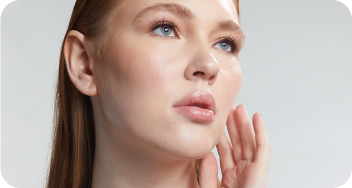
Acne Scar Treatment: What Works and What Doesn’t
|
|
Time to read 4 min
|
|
Time to read 4 min
LED-SCIENCE
[07-18-2025]
by Madison Carter
Acne scars aren't all the same, and understanding which type you're dealing with is the first step toward successful treatment. The most common forms are atrophic scars, which appear as indents in the skin. These include boxcar, rolling, and ice-pick scars, all caused by collagen breakdown. On the other hand, hypertrophic and keloid scars result in raised tissue due to excess collagen during the healing process. Each type responds differently to treatment, so knowing your scar type will help you choose what really works.
Table of contents
As Dr. Erez Dayan notes, red light therapy is a powerful tool for “skin rejuvenation and recovery”—two key needs when dealing with both indented and raised scars. Red and near-infrared light therapy wavelengths help stimulate fibroblasts, encouraging collagen and elastin production. This process can gradually fill in atrophic scars, smooth skin texture, and reduce persistent redness or pigmentation left after breakouts.
Additionally, red light promotes better circulation and accelerates tissue repair, which helps support long-term skin recovery. While red light is key for scar healing, blue light can also be used alongside it to target acne-causing bacteria and reduce the chance of future breakouts. This makes LED light therapy a powerful, multi-benefit option for anyone treating acne scars while also managing active or recurring blemishes.
While treatments like red light therapy offer real, science-backed results, not every product or trend lives up to the hype. Many over-the-counter solutions claim to fade scars but fall short due to weak formulations or lack of clinical backing. Harsh exfoliants, frequent use of strong acids, and DIY treatments like lemon juice or baking soda can actually damage your skin’s barrier and worsen discoloration over time.
Likewise, “miracle” creams without proven ingredients such as silicone or peptides rarely deliver lasting improvement. And when it comes to at-home lasers or LED tools without FDA clearance, it’s hard to trust their effectiveness. These devices may not use the right wavelengths or intensities to actually penetrate the skin and support healing.
To get the most out of LED therapy, consistency matters. Cleanse your skin first to ensure the light can properly penetrate. Then apply your LED device for 10 minutes, 3 to 5 times per week.
For best results, follow this simple structure:
Before your session : Start with clean, dry skin and avoid layering on thick products.
During : Use your LED device for the full treatment duration
After : Apply hydrating serums like hyaluronic acid and finish with a nourishing moisturizer.
Avoid using strong exfoliants or acids right after LED therapy, as your skin may be more sensitive. With steady use, many users report softer texture, less visible indentations, and a more even overall tone within 3 weeks.
Glotech Pro is a lightweight, medical-grade silicone LED mask offering both blue and red light wavelengths.
Blue light fights active acne while red light stimulates collagen production , aiding in skin recovery and minimizing post-acne marks.
It’s ideal for users seeking an advanced, dermatologist-level treatment from home.
GloTech Acne Wand combines red and blue light therapy in a sleek, portable design for targeted acne treatment.
It’s a powerful, FDA-cleared solution that reduces breakouts and helps prevent new ones in just 3 minutes a day.
The wand is ideal for targeting individual blemishes, clinically proven, and beginner-friendly.
The most effective acne scar routines often include a combination of in-clinic procedures and at-home LED light therapy . Professional treatments like microneedling and lasers can target skin remodeling, while LED light therapy supports healing between sessions and enhances results.
Dr. Lisa Espinoza, a cosmetic dermatologist, notes that the GloTech™ Mask “delivers professional-level results in a home setting… and allows patients to stay consistent with their skin health routines between visits.”
Even if you're not ready for clinical procedures, LED therapy alone can make a real difference. It's safe and works for all skin types. By creating a balanced regimen, you give your skin the best chance to heal.
Acne scar improvement doesn’t happen overnight, but with the right tools and a consistent routine, real transformation is absolutely possible. Before starting any treatment, it’s essential to set realistic expectations. Deep atrophic scars and post-inflammatory pigmentation typically take several weeks (sometimes months) to fade, and results appear gradually with continued care.
At-home LED devices like the GloTech™ Mask Pro , Acne Wand , and Neck & Chest Collar help you treat scars from multiple angles. Many users report noticeable improvements in tone, texture, and overall skin confidence within 3 weeks. These results might not happen instantly, but they’re visible and lasting.
LED light therapy delivers the best results when combined with clinically proven serums and skincare actives that support scar healing and skin regeneration. Look for products formulated with:
Vitamin C : Helps fade hyperpigmentation and boosts collagen production.
Copper Peptides : Stimulate fibroblasts to repair indented scars.
Hyaluronic Acid : Keeps skin hydrated, improving plumpness and texture.
Niacinamide : Reduces redness and helps strengthen the skin barrier.
Avoid harsh scrubs or strong acids immediately after LED sessions, as these can increase irritation and delay results.

